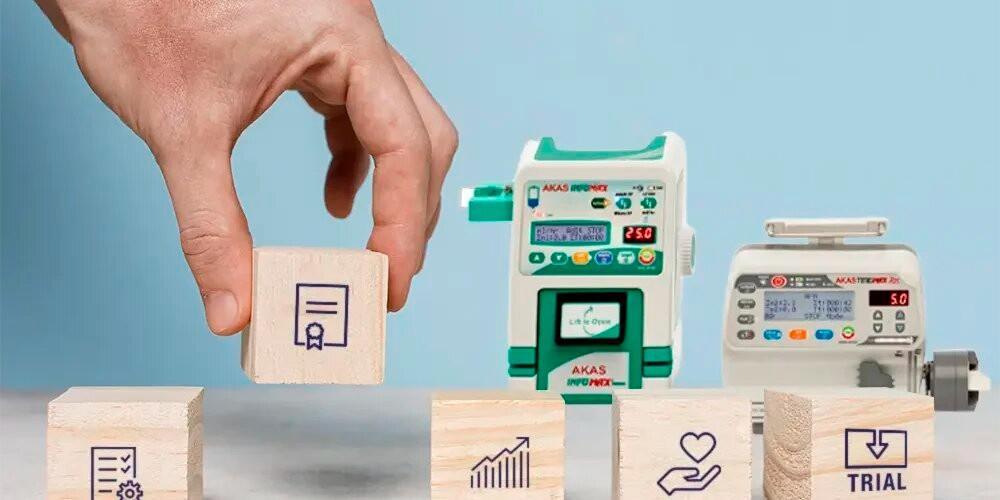Essential Guide for Hospitals Buying an Infusion Pump

Starting a new hospital brings countless decisions, especially when it comes to selecting critical care equipment. Among the most vital tools in modern clinical practice is the Infusion Pump. Choosing the right device ensures not just operational efficiency but, more importantly, patient safety. For hospitals setting up for the first time, understanding what to look for in an infusion pump can save time, resources, and complications down the line.
Here is a clear, structured overview of what hospital administrators and biomedical teams should consider before investing in their first infusion pump.
1. Patient Safety Comes First
-
Ensure the infusion pump includes anti-bolus and occlusion detection features
-
Look for built-in air bubble detection to reduce risks during administration
-
Confirm the device has automated alarm systems to alert staff in real-time
2. Accuracy and Precision Matter
-
Check that the pump delivers medication with minimal flow rate deviation
-
Review technical specifications for flow rate accuracy and dosage limits
-
Opt for pumps that offer micro-infusion capabilities for sensitive therapies
3. Ease of Use for Clinical Staff
-
Choose models with intuitive user interfaces and touchscreen navigation
-
Ensure clear visual prompts and alarms for quick troubleshooting
-
Verify that minimal training is needed to operate across all shifts
4. Compatibility with IV Sets
-
Confirm whether the infusion pump is compatible with standard hospital IV sets
-
Avoid being locked into proprietary consumables that increase long-term costs
-
Test for consistent operation across multiple brands of tubing
5. Programmable Features Save Time
-
Look for pumps with preloaded drug libraries for faster configuration
-
Verify that settings can be saved and reused across departments
-
Evaluate the ability to schedule infusions and change rates automatically
6. Portability and Design for Multiple Wards
-
Prioritise pumps that are compact and lightweight for easy movement
-
Ensure units can be securely mounted to IV poles or bedside stands
-
Choose models with battery backup for seamless operation during transfers
7. Integration with Hospital IT Systems
-
Ensure the infusion pump supports electronic medical record (EMR) connectivity
-
Opt for models with USB or Wi-Fi data logging and export options
-
Consider devices that allow remote monitoring for ICU or high-dependency units
8. Service Support and Maintenance
-
Check whether the manufacturer provides local servicing and annual calibration
-
Confirm availability of replacement parts and technical support in your region
-
Ask about preventive maintenance schedules and technician response times
9. Alarms and Safety Warnings
-
Evaluate the loudness and visibility of audio-visual alarms
-
Ensure alerts can differentiate between high-risk and low-risk conditions
-
Check that the interface logs all alarms for post-event analysis
10. Power Backup for Emergency Use
-
Confirm that the infusion pump includes a long-lasting battery backup
-
Understand how long the pump can operate without mains power
-
Ensure battery charging indicators are clearly displayed and accurate
11. Scalability for Future Growth
-
Choose a model that allows modular upgrades or integration with multiple pumps
-
Plan ahead by selecting infusion pumps that meet the growing needs of your hospital
-
Check whether the brand supports standardisation across departments
12. Regulatory and Safety Certifications
-
Ensure the pump complies with IEC, CE, or BIS standards as per your location
-
Confirm that the manufacturer is ISO 13485 certified for medical devices
-
Look for documentation on clinical validations and approvals
13. Training and Onboarding Support
-
Ask whether the supplier provides in-person training and digital manuals
-
Ensure nursing staff receive proper hands-on orientation
-
Evaluate the availability of support videos and quick-start guides
14. Warranty and Replacement Policies
-
Review warranty terms, including parts, labour, and onsite service
-
Clarify what happens in case of device malfunction during critical use
-
Understand the timelines for replacement or loaner unit delivery
15. Total Cost of Ownership
-
Calculate not just purchase cost but also maintenance, training, and consumables
-
Compare long-term expenses between basic and advanced models
-
Assess warranty coverage and service contract offerings for sustainability
16. Special Features for Specialised Use
-
Identify if your hospital needs pumps for neonatal, oncology, or anaesthesia care
-
Check if the model can support dual or multi-channel infusions
-
Consider infusion pumps with programmable bolus and ramp-up features
17. Reviews and Hospital Case Studies
-
Read independent reviews and ask for reference sites or hospital testimonials
-
Look into how the infusion pump performs in similar clinical environments
-
Speak to other hospitals about their experience with the same brand
18. Availability of Accessories
-
Check for availability of IV poles, mounting kits, and carry cases
-
Ensure that accessories are hospital-grade and durable
-
Confirm that accessories are easily replaceable when needed
Conclusion
For any new hospital, investing in the right Infusion Pump is a critical step toward ensuring safe, precise, and efficient drug delivery. A well-chosen pump can significantly impact clinical outcomes, workflow smoothness, and patient confidence. It’s not just about purchasing a device; it’s about making a clinical and operational decision that will support your hospital for years to come.
Akas Infusion, currently the largest manufacturer, aims to become the global leader in Syringe and Infusion Pumps helping hospitals deliver care with safety, trust, and reliability at every step.
- Art
- Causes
- Crafts
- Dance
- Drinks
- Film
- Fitness
- Food
- Games
- Gardening
- Health
- Home
- Literature
- Music
- Networking
- Other
- Party
- Religion
- Shopping
- Sports
- Theater
- Wellness


